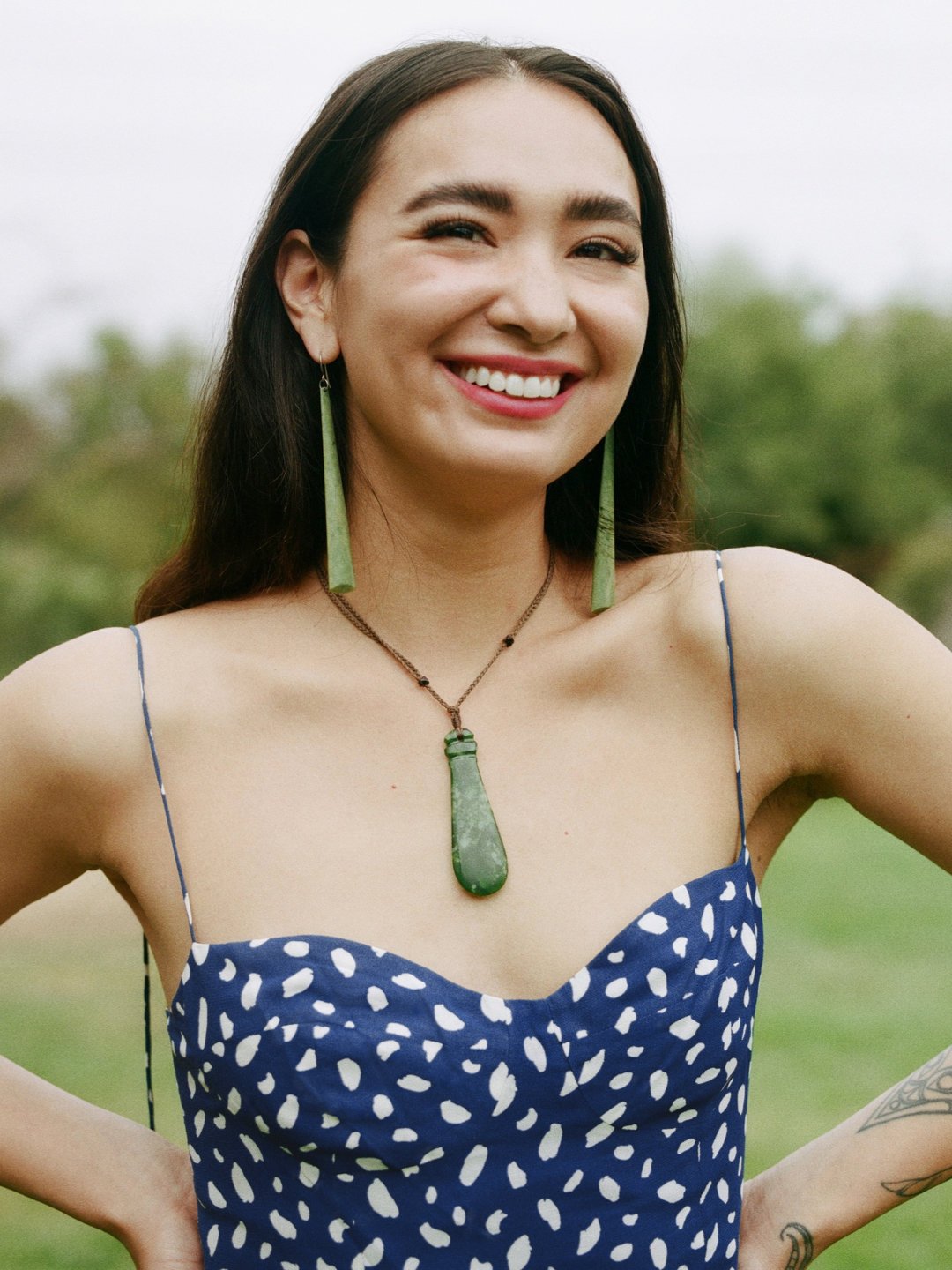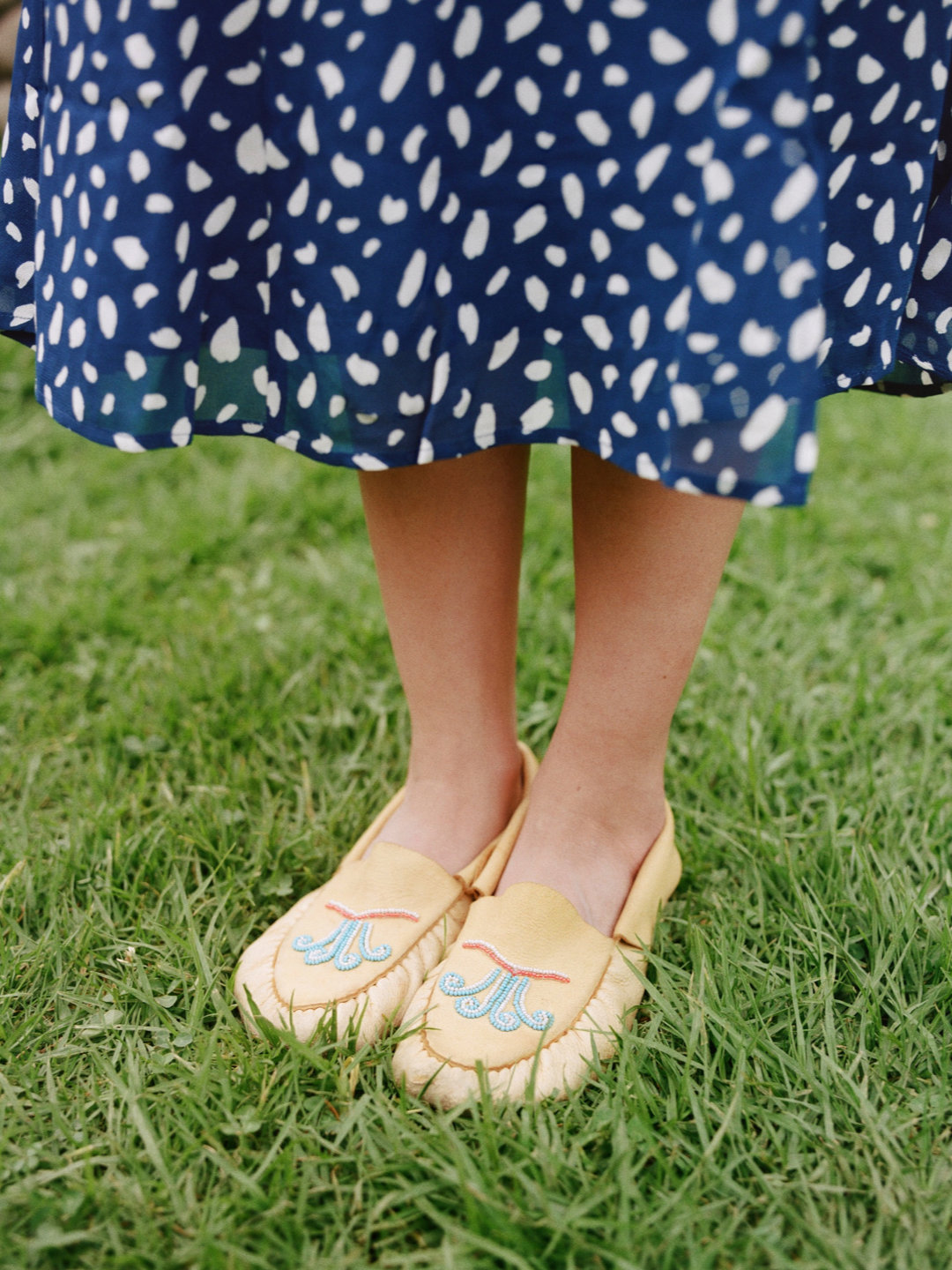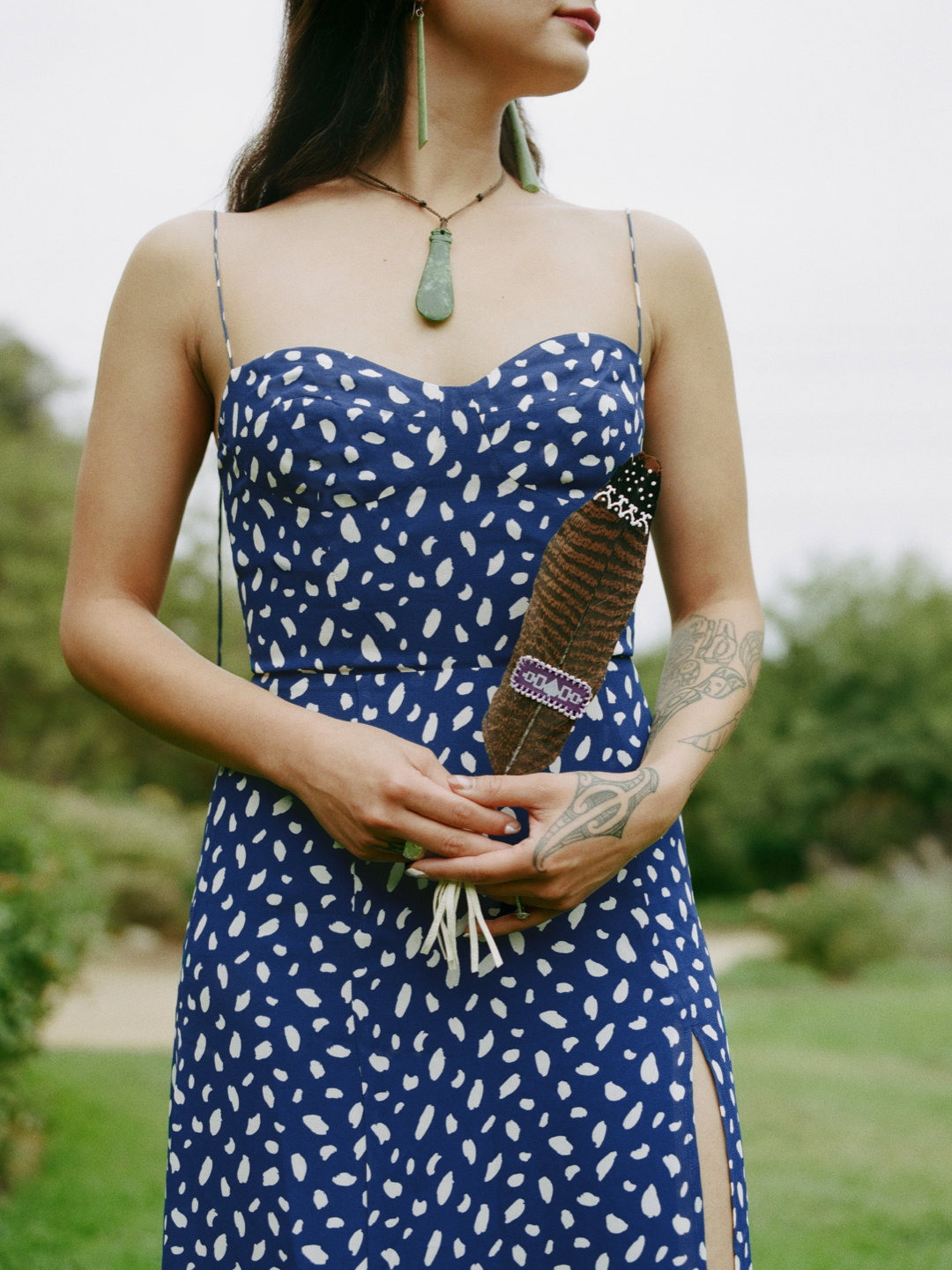Maka Monture
Getting stuff done with
Getting stuff done with Maka Monture

Meet Maka Monture Paki, an Indigenous artist, activist, and co-founder of jewelry brand Moonture.
Tell us about your journey.
I am a Tlingit, Filipina, and Kanien'kehá:ka woman, born into the Raven moiety, Copper River Clan, and House of the Owl. My Tlingit name is Keixé Yaxtí, meaning Morning Star. I was raised in the small village of Yakutat, Alaska - a rural coastal town in the Southeast. My ancestors migrated to Yakutat over a thousand years ago from the North. After I graduated high school in Yakutat, I received my Bachelors of Science in Indigenous Studies and my Masters of Public Health. Currently, I reside in Anchorage, Alaska, where I dedicate my professional time to environmental and social advocacy to sustain the Arctic and Indigenous communities, cultures, human rights, and biodiversity in the face of modern change while developing my art practice.
How did you first get interested in sustainability?
In my upbringing, there were stories of our culture that were passed down to my brother and me, surrounding the traditional practices of relationship with the environment and health. We understood that the foundation of a strong person began with the mental qualities of self-discipline, humility & courage, and resilience. This was tied to the land as the land is necessary to learn these traditional practices and values. Sustainability was always present in these cultural teachings, we just have a different word for it. This foundation became important for my journey.
What cause or causes are important to you?
On land: It’s important to help the world see that young people who are land defenders aren’t necessarily activists–we are survivalists. We are the physical form of the land fighting for itself. We’re the physical proof of the love and resilience of our ancestors. This is why we need to create our narratives and host our own spaces.
On human rights: Missing and Murdered Indigenous Women (MMIW) is a social issue on both sides of the North American border. There are systemic causes of the violence that results in the disproportionate amount of missing & murdered Indigenous women and girls, a majority of whose cases have never been solved.
This is a war against native women - a war directly tied to historical trauma and colonization.
What inspired you to start Moonture?
COVID impacted my family in 2020. During the shelter-in-place mandates, my husband was unable to work in his dental practice for several months. I was still working on my Masters of Public Health while also working part-time for a non-profit. Our finances were the galvanizing need behind diving into jewelry design. Moonture seeks to create at the intersection of cultural intention and coherent emotion. Drawing from our Lingít/Kanien'kehá:ka and Māori heritage. Moonture has the mission to continue the creation story by designing from the aquifer of our cultures.
What have you learned about art through your culture?
Art has the power to heal, educate, and help non-native people connect empathetically to the modern Indigenous experience. Indigenous makers were some of the first makers of sustainable fashion because many of our woven garments were biodegradable–as they were spun from natural wool and plant fibers. I’ve had discussions with loved ones about how what we wear becomes part of our narrative and that the more people wear that narrative, the more visible the history becomes. I recognize that many Indigenous makers today are still learning how to design sustainably and ensure that our products have the lowest impact on the planet and have a low energy footprint. I dream of designing and releasing a small capsule collection that explores the intersection of modern sustainability, social justice activism, and education of Indigenous land rights.
Has your culture influenced your approach to environmental justice?
My people are resilient. I remember, as a child, sitting at our old wooden kitchen table after dinner while my grandfather spoke about how the Tlingit people trained to stay strong and healthy. He would sit up straight as a rod, narrow his eyes, raise his hand as a blade, and thrust it out to the distant horizon of our ancestors. “Heendei Kwagoot!” he would declare in an authoritative voice, imitating how, as Tlingit, we would be ordered by our uncles to go dip in the ocean’s water to strengthen our tolerance to the wild cold of our land. Environmental justice currently is a space that is similar to cold water. Like the training, I have to go into these spaces trained and prepared, since they were not originally designed for Indigenous people. Alaska is on the front lines of climate change, which is just as much of a social and human rights issue as it is environmental. Younger generations will play an important role in addressing these challenges. However, we’re not always present in the spaces that make decisions about our homes.
Intersectionality affects the way people experience climate change. Do you think it also affects the way people respond to it?
Indigenous feminine youth and Indigenous people of the Pacific know and understand the value of coming together to share our stories, ideas, and advocacy to create movements to support our communities. At COP 25 (the 2019 United Nations Climate Change Conference), I worked with diverse youth from vulnerable communities from all over the world. It was clear that in today’s world, climate activists of color are left out of the world narrative because of the historical implications that have led to the oppression of people of color. We found ourselves criminalized and escorted by police, while White bodies were protected by 30 bodyguards.
How can we better support Indigenous communities and conservation efforts?
Use your platforms to help educate and amplify our native and Indigenous grassroots movements. Donate to them. Follow them–share their content, and not only on days of action. We’re also often asked for free labor on panels or events or workshops–compensation is necessary. Caring about the future generation/s is for everyone. It is important to make a space that can allow for that–for people from all generational and cultural backgrounds. An inclusive space invites and ensures access. A safe and welcoming environment allows us to explore intentional partnership opportunities and creates opportunities to learn for people of all backgrounds, communities, and identities.
What advice would you give to young people interested in pursuing careers in sustainability?
There’s room for all of us to pursue futures in sustainability. Find a mentor/teacher in the industry to invest in a meaningful relationship with and maintain that relationship. Climate activism is anti-racism activism and is sustainability. The colonized world seems to always separate and categorize everything when from an Indigenous perspective, but everything is like a biosphere–everything intersects.

Favorite hidden gem in Alaska?
Yakutat, Alaska. My village! It is the place to walk beaches upon beaches. We grow up looking for our beach gold: vintage Japanese glass floats.
What are you reading right now?
Becoming Supernatural by Dr. Joe Dispenza. Also Rumi. Rumi was a 13th-century Persian queer poet who wrote on love and life in ways that could somehow be defined and undefined all in one poem. One of my favorite quotes from Rumi is “Stop acting so small. You are the universe in ecstatic motion.”
Favorite piece of jewelry you’ve ever worn?
As an intergenerational being, I have learned to weave together my realities intersectionally and cross-sectorally. My husband has a Pounamou Toki (New Zealand Jade Adze) necklace. He lent it to me for some time when we had to spend the year apart in our respective countries before we were married. Jade holds the energy of the wearer and responds to body heat
Meet some of the other people who are getting stuff done.
